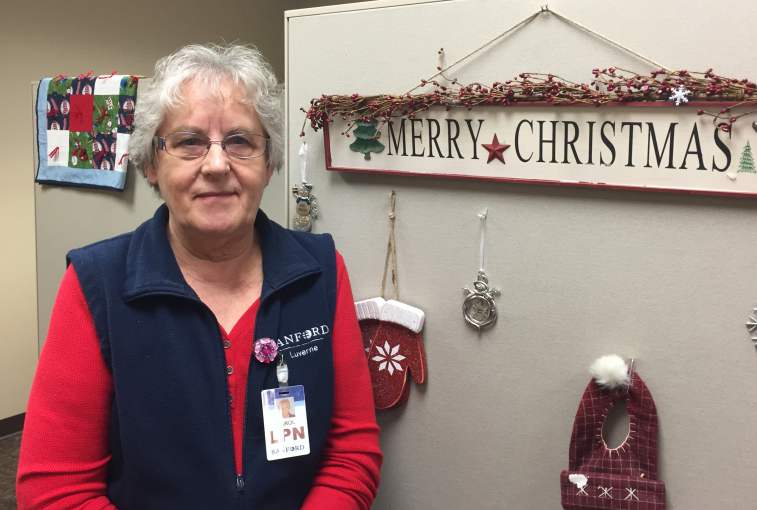The year was 1963. Gasoline was 29 cents a gallon. The average yearly salary was $5,800, and a new home cost around $12,000. It was a newsworthy year as well. A new thing called ZIP Codes were implemented, the polio vaccine could be administered in a lump of sugar, Martin Luther King Jr. delivered his “I have a dream” speech, and by the end of the year, President John F. Kennedy would be assassinated.
In southwestern Minnesota, Carol Wieneke was having a big year, too. She graduated from licensed practical nursing (LPN) school in August and got married 12 days later. In mid-November, a friend told her that the local doctor 14 miles away in Luverne needed a nurse to assist him.
Carol was interested so she met with the clinic’s part-time bookkeeper, who asked if she could start right away. There was no interview or resume. Her starting salary was 90 cents an hour. She said yes. Fifty-five years later, she’s still there at what is now Sanford Health.
Join the Sanford Health team: Apply online now
Wieneke’s nursing career was always in the clinic. Over the years she’s moved to four different buildings and worked with a multitude of doctors. She has a lot of good memories.
If there is one regret, Wieneke says, it’s that she did not keep a journal of her early career.
“I’ve always had good working partners,” she says. “I’ve learned a lot from all of the doctors. And I’ve outstayed pretty much all of them.”
Cared for docs when they were kids
In fact, she’s worked with generations of doctors. She remembers giving shots to a current physician when he was a baby, and babysitting another.
“The whole medical field is just so amazing. Back in the days when I started, a clinic office visit was $3, and OB (obstetrics) care and delivery was $90. We didn’t have MRIs, or CTs or ultrasounds. Even the lab work was very simple. Just a few tests. It’s just incredible how things have progressed.”
Wieneke’s job has changed a bit over the years, too. One of her proudest achievements was starting the triage program in the Luverne clinic, which she ran for 10 years. Today, clinics still use this highly efficient staffing model.
After triage, Wieneke served as an outreach nurse for a number of years, and in 2011 she started in picture archiving and communication system (PACS) scheduling, where she works today. PACS schedules all hospital-based procedures, ensuring prior authorization and patient education.
Working close to home
And after driving to Luverne for over 40 years, Wieneke now lives five blocks from the clinic. “I live where it’s really handy. No more driving in the winter,” she says.
And there are no current plans to retire.
“I really do like my job. It’s not like I ever had a goal to stay for a certain number of years.”
Within the Sanford Health enterprise, Wieneke is the second most tenured active employee and the most tenured active nursing employee.
“I want to thank my family for always supporting me” she says. “They know how much my nursing career means to me. I’m sure God put me in this place for a good reason, and now it’s in his hands how long I continue.
“As I tell my co-workers, as long as I can do my job and remember my password to get into the computer every morning, I think I’m doing pretty good.”
Read more
- Good Samaritan Society home health nurse helps baby, family
- Breast cancer set nurse on a mission to help others
- Hometown boy’s plight moves NICU nurse to donate kidney
…
Posted In Luverne, Sanford Stories
